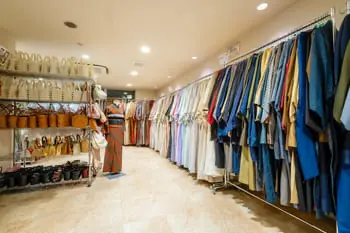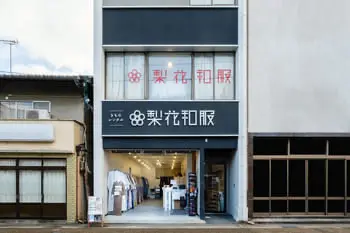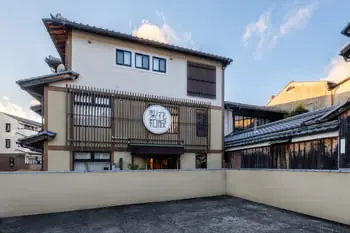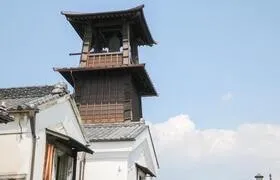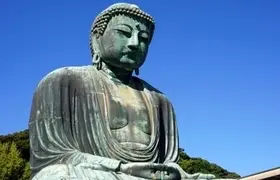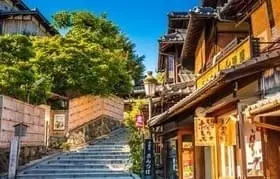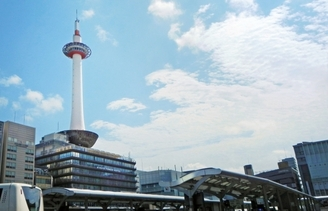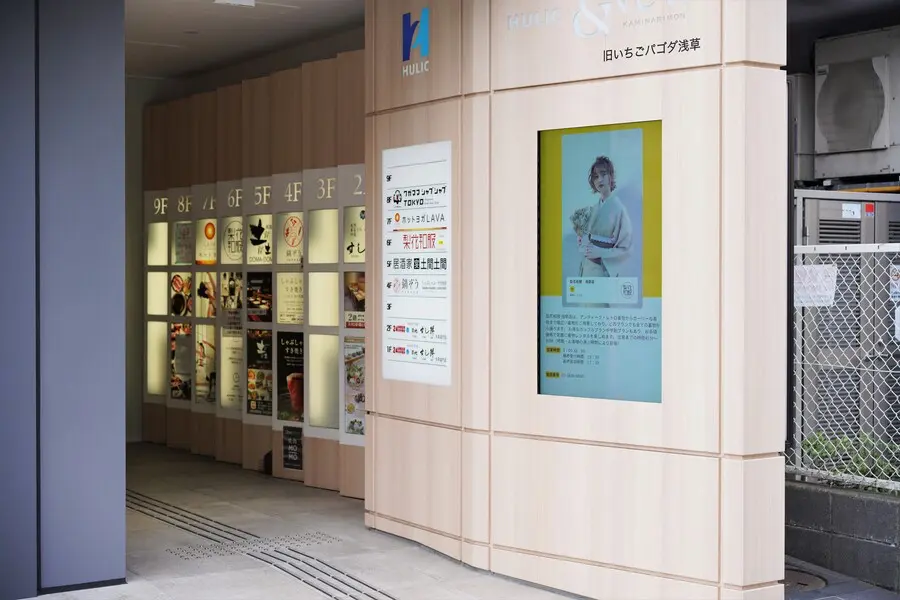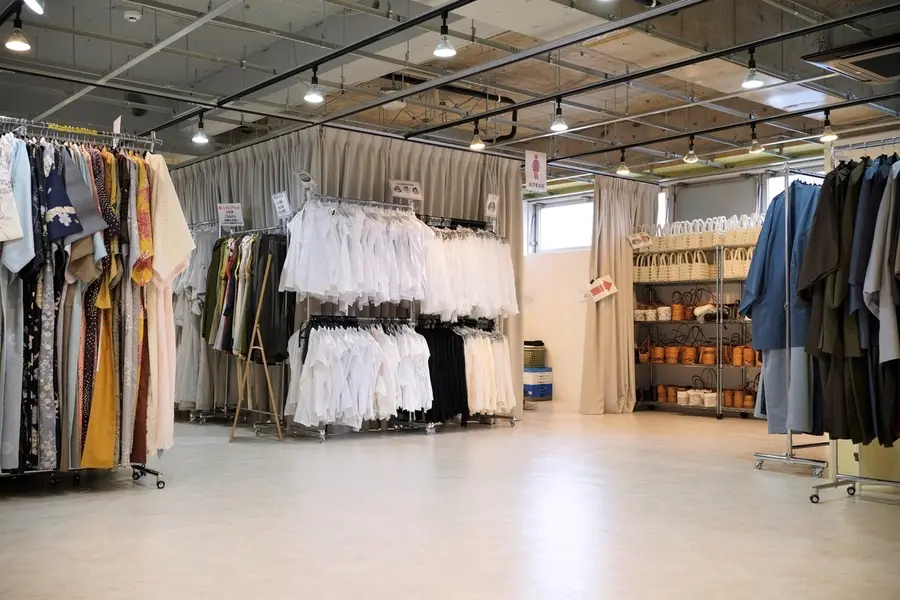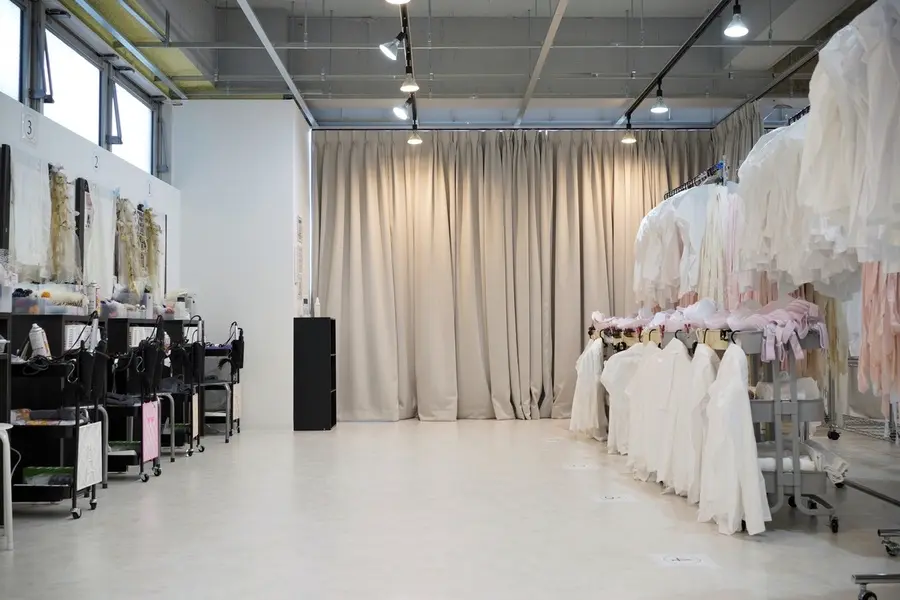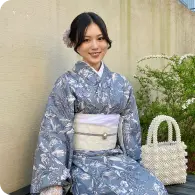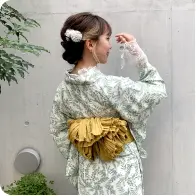10 points to consider when renting a retro kimono in Asakusa

Tokyo’s famous tourist destination, Asakusa. Sometimes you might want to change things up and explore the area while wearing a kimono.
In recent years, retro and antique kimonos have become a trend, and many people visiting kimono rental shops in Asakusa are choosing retro kimonos. Many rental shops in the area are also offering retro and antique kimono plans.
If you’d like to see a list of retro and antique kimonos available at Rikawafuku Kimono Asakusa Shop, please check this link:
>>Retro Kimono Rental Plans and Antique Kimono List in Asakusa
We’ll now provide you with 10 points on the characteristics of retro kimonos, how to wear them, and recommended places for sightseeing while wearing a kimono.
First of all, what are retro kimonos…
The term “retro” means nostalgic, and it refers to kimonos that were worn during the Taisho era to the early Showa era.
Especially during the Taisho era, foreign cultures had a significant influence on Japan, and European Art Nouveau inspired the use of plant patterns and Western-style paintings on kimonos. The colors became vibrant, and kimonos, obis, and accessories featured bold patterns and colors. It was a time when the culture of kimono underwent a significant transformation.
Kimono styles from that era have become popular today as retro-modern styles.
However, at that time, many people were smaller in stature, and kimonos were tailored to fit individuals, resulting in shorter sleeve lengths and body lengths. Therefore, antique kimonos may have shorter sleeves or body lengths, which might be a concern for taller individuals.
Kimono rental shops often offer kimonos that can accommodate taller individuals, so you shouldn’t worry too much.
If you’re experiencing kimono rental for the first time, check this out: First-time Kimono Rental in Asakusa – Check This Out!
- 1. Rikawafuku Kimono Asakusa Shop Offers a Wide Selection of Retro and Antique Kimonos
- 2. Makeup
- 3. Hair Set
- 4. Choosing Patterns to Suit Your Body Type and Age
- 5. How to Choose an Obi (Sash)
- 6. Recommended Obi-Dome (Obi Clip) and Obi-Age (Obi Sash Band)
- 7. Hakama Plans
- 8. Hats
- 9. Earrings, Piercings, and Necklaces
- 10. Must-Visit Places for Sightseeing in Asakusa
- 11. Plenty of Photogenic Spots
Rikawafuku Kimono Asakusa Shop Offers a Wide Selection of Retro and Antique Kimonos
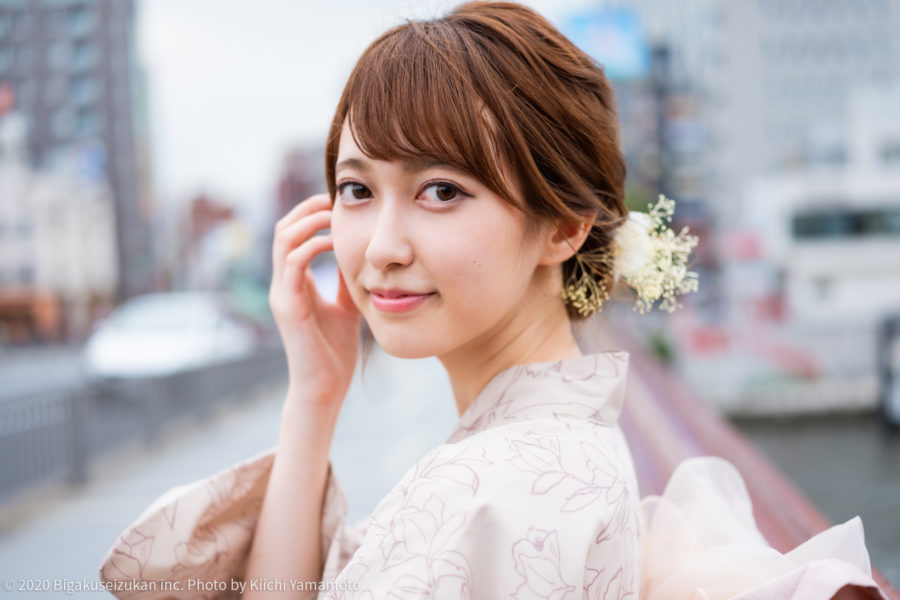
Rikawafuku Kimono Asakusa Shop offers one-of-a-kind vintage kimonos made of genuine silk and antique kimonos that are easy to wear for young women.
We have around 100 retro and antique kimonos available, so you should be able to find your favorite one. For more details, please check the Antique Kimono List page in Asakusa:
>>Retro Kimono Rental Plans and Antique Kimono List in Asakusa
Next, let’s introduce the makeup that goes well with retro kimonos.
Makeup

When you look at photos and paintings from that era, you’ll notice that the lips were red, eyebrows were straight or slightly downturned, and they were drawn thicker, similar to today’s makeup trends. Since retro kimonos often feature vibrant colors and patterns, it’s a good idea to have bold and distinct makeup to match.
For eye makeup, thick eyeliner and softly blended eyeshadow under the eyes will create a retro-inspired look.
Hair Set
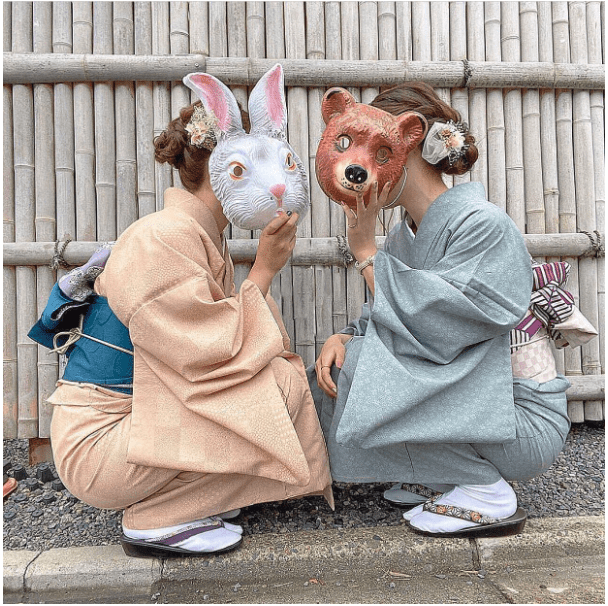
Popular hairstyles from that era included “finger waves” and “ear cover.” Finger waves involve creating waves in the front hair. Ear cover, as the name suggests, covers the ears with hair. The combination of finger waves and covering the ears with hair was a trendy style at the time.
However, creating this hairstyle can be a bit challenging. To do it yourself, you would use a curling iron to create finger waves in the front hair, then use hair spray to hold them in place firmly. For the ear cover style, you would also use hair spray to secure the hair over the ears.
Since using only hair spray can be a bit risky, many pins and curlers are used as well. While you can find tutorials online, if you’re unsure, it’s best to consult a hairstylist.
Next, we’ll share tips on choosing a retro kimono.
Choosing Patterns to Suit Your Body Type and Age
Retro kimonos are known for their vibrant colors and unique, often bold patterns, so choosing the right kimono is essential.
First, consider the size of the pattern. If you are petite, opt for smaller patterns, while taller individuals can choose kimonos with larger patterns.
When there are large patterns near the hem, taller individuals can pull off this look beautifully. On the other hand, smaller patterns on shorter individuals create a gentle and cute impression.
Additionally, if you have a fuller figure, larger patterns may be more suitable for you. For those concerned about their body shape, consider choosing patterns with vertical stripes or darker colors.
For individuals aged 30 and above, who sometimes think, “I’m getting older, so something too flashy might not be suitable…” wearing gentle and pastel colors can make you look elegant and soft.
Choosing the Obi (Sash)
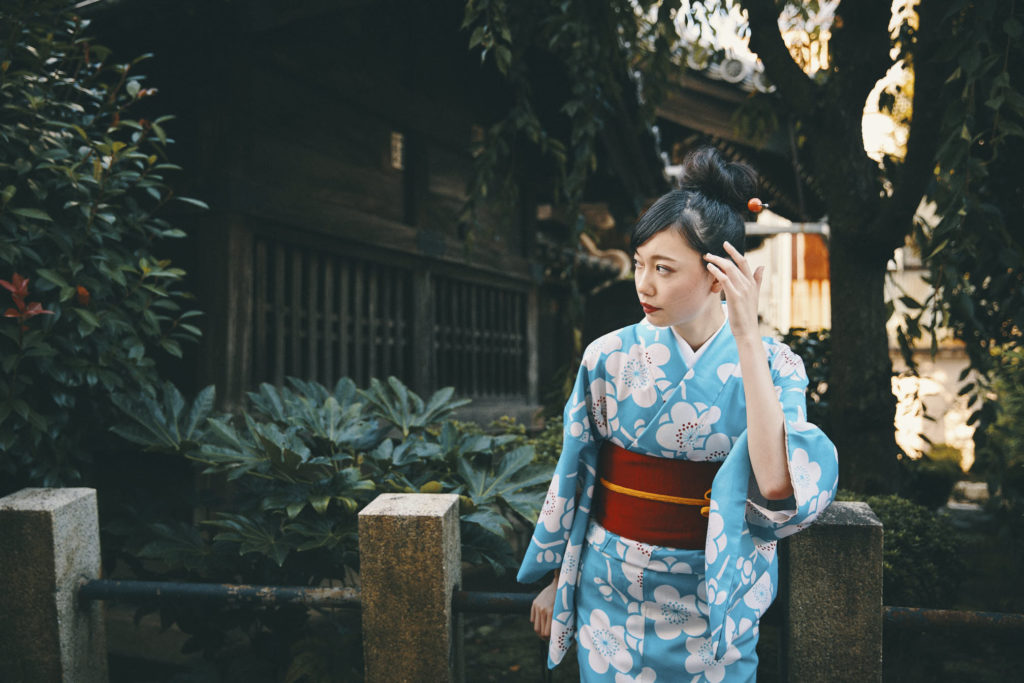
Once you’ve selected your kimono, the next step is choosing the obi (sash). The key to selecting an obi is to match it with the colors in your kimono’s pattern. Choosing a color that appears in the pattern will create a harmonious look, and opting for a color that is less prominent in the pattern can give a more elegant and sophisticated appearance.
If you can’t find an obi that matches the colors in the pattern, red, yellow, and purple are three colors that generally complement various kimono colors.
Recommended Obi Sash and Obi Age (Obi Sash Clip)
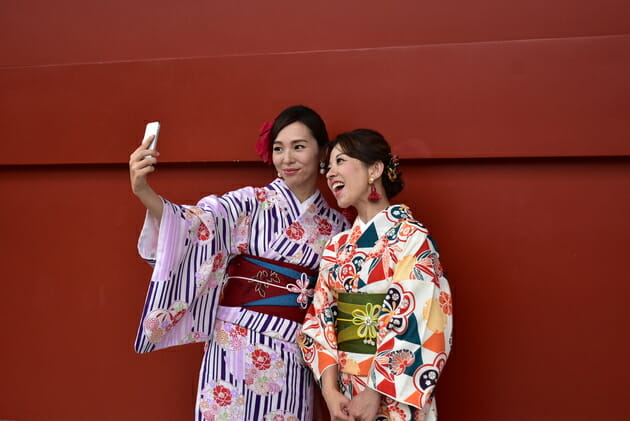
Once you’ve decided on the obi, you’ll need to select the obi sash and obi age (obi sash clip). Generally, it’s a good idea to use colors from your kimono or obi’s pattern for these accessories. Since retro kimonos are vibrant, a wider obi sash with a bold appearance is a good choice.
Moreover, when you look at paintings and photos from that era, it appears that shibori (tie-dye) obi ages were commonly used. If the rental shop has shibori obi ages, choosing one can bring your outfit closer to the style of that time.
Hakama Plan (Hakama Skirt)
Kimono rentals often offer hakama sets as well. The iconic purple kasuri pattern kimono paired with a red hakama skirt, as seen in “Haikara-san ga Tooru,” is incredibly cute. Hakama skirts come with several advantages, including not worrying about the hem or obi coming undone. Additionally, you can wear black boots with hakama, eliminating the need to wear unfamiliar zori sandals.
Hakama comes in two types: one with a divided skirt similar to trousers and another with an undivided skirt resembling a regular skirt. Both types are more comfortable for walking than kimono. Hairstyling for hakama is also simpler, usually a half-up hairdo with simple hair accessories, making it easier than kimono hair arrangements.
While you may wear kimonos on occasions such as weddings and funerals, there are fewer opportunities to wear hakama, such as at university graduation ceremonies. Why not give it a try?
Next, we’ll introduce small accessories that complement retro kimonos. While traditional Japanese accessories are charming, some people enjoy mixing Western-style accessories with kimonos for a unique look.
Most kimono rental shops allow you to visit without bringing any accessories, but some may permit you to bring your own if you have items that would match your kimono.
Hats

Surprisingly, hats can be a great match with kimonos. In summer, straw hats work well, while in winter, berets or fedora hats are recommended. Hairstyling at a salon or rental shop can be costly, and doing it yourself can be time-consuming or challenging, so wearing a hat can be a more convenient and economical option.
Earrings, Ear Piercings, and Necklaces
When wearing a regular kimono, earrings are often worn, but when dressing in retro kimonos, larger and more extravagant pieces are recommended. Similarly, for necklaces, opt for long necklaces with bold or flashy designs rather than small, subtle ones.
Once your outfit is complete, let’s go sightseeing in Asakusa! Here are some recommended spots.
What Are the Must-Visit Places in Asakusa?
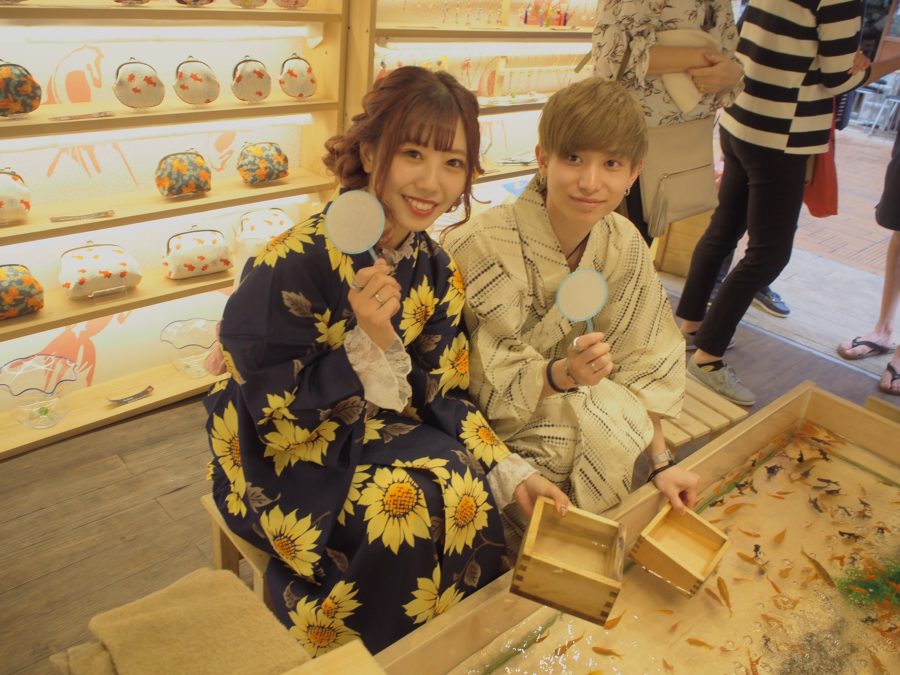
When you think of Asakusa, the first place that comes to mind for most people is Senso-ji Temple. Especially in front of the Kaminarimon Gate, you’ll find many people taking photos. As there are many foreign tourists, if you visit in a kimono, you might become very popular among foreigners who want to take photos with you.
Next, on the way from Senso-ji Temple to the Hozomon Gate, you’ll find “Nakamise-dori,” where you can select souvenirs and enjoy some street food.
These tourist spots also have a different atmosphere in the evening or at night, providing a unique experience compared to daytime visits.
Plenty of Photogenic Spots
In addition, Asakusa offers numerous photogenic and Instagram-worthy spots. One highly recommended location is the colorful windmill wall at Asakusa Kagetsudo Main Store, which is incredibly vibrant.
This place also offers dining, and the “Jumbo Melon Pan” is quite famous here.
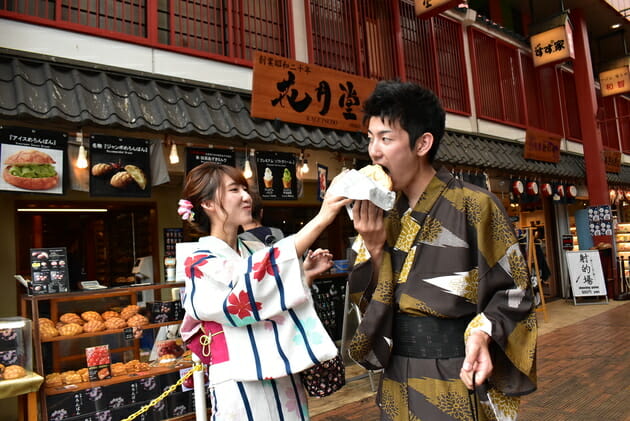
These are the ten key points for renting retro kimonos in Asakusa.
When renting a kimono for sightseeing in Asakusa, why not try the retro kimono style? It could be a delightful experience!
Asakusa is fun even on rainy days! Here are some recommended indoor sightseeing spots!
Kimono Walk in Asakusa: What to Watch Out for When Taking the Train
Short & Sweet! Asakusa Kimono Rental with a Quick Sightseeing Route
Asakusa Hatsumode Guide: How to Avoid New Year Crowds & Stay Safe!
Kimono Rental in Asakusa: Tips for Renting with Friends!

